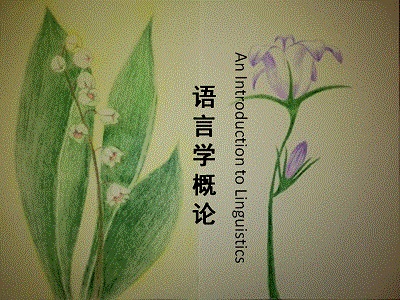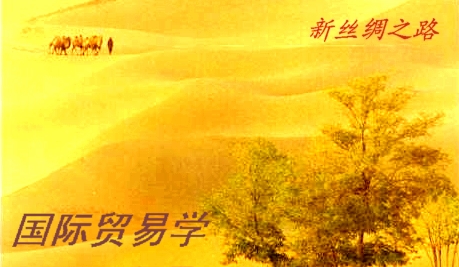
当前课程知识点:Shadow Play—Seeking the Lost Shadow of China(皮影戏) > Course questions > Course questions > 1.1.The origin and the development of shadow play
返回《Shadow Play—Seeking the Lost Shadow of China(皮影戏)》慕课在线视频课程列表
返回《Shadow Play—Seeking the Lost Shadow of China(皮影戏)》慕课在线视频列表
There is a popular phrase originated from Japanese called "two-dimensional (2D) culture",
to which many young people are addicted.
What I'm about to mention today is also a kind of 2D culture.
Also in the 2D space, it shows endless charm,
and has moved countless people from civilians to generals and ministers.
Ethereal and mysterious,
it tells touching stories with distinct characters,
vivid performance and appealing style.
I think it is and demonstrates the 2D world of China for thousands of years.
Yes, as you can guess, it is Chinese shadow play.
Hello everyone!
I'm Pan Jun from South-Central University for Nationalities.
In the following curriculum,
I will lead you to find the lost shadow of China and we'll explore the development path
and creation characteristics of shadow play to reveal the spiritual home of the traditional Chinese from which it is inseparable,
yet seemingly remote.
Introduction to Shadow Play
As is known to all that the use of fire is a sign of human evolution.
Human beings learned to use light the moment they learned to use fire.
Together, the light and fire guided human beings from barbarism to civilization.
Where there is light, there is a shadow.
People often say that the form and the shadow are inseparable companions.
There is always a shadow whether it is the sun light or the light of fire at night.
Ancestors found shadows mysterious and incomprehensible.
They believed that the shadow was an important part of their life,
and were afraid that others would step on their shadows and hurt their souls.
An interesting story is recorded in Zhuangzi · The Old Fisherman:
There once was a man who was afraid of shadow and trace and wanted to run away from them.
The faster he ran,
the more traces he left,
and yet the shadow still followed him.
He thought that he was not running fast enough,
so he kept running faster and died of exhaustion,
not knowing that shadow will disappear in the shadow and traces will not be left in the absence of action. How foolish!"
This story shows that the ancients did not know the law of shadows,
which led to the belief and taboo of witchcraft about shadows.
In the meantime,
they had many fanciful thoughts on light and shadow,
linking the shadow with the soul and making it popular as a folk activity for a long time.
The shadow play art that emerged later was a great creation of the Chinese ancestors using light and shadow as a means of expression.
Chapter I Definition
What is shadow play?
Wei Liqun, a well-known domestic shadow play expert,
defined it in his book The History of Chinese Shadow Play Art as follows:
Originated from play of "shadows",
shadow play is a drama exhibited by playing with shadows.
It is a kind of puppet play in which the shadow actors manipulate the paper or leather silhouette images,
throw their shadows on a screen through the light,
musicalize and sing to tell stories.
Section II Outfits
In the opera industry,
"outfits" generally refer to all opera performance tools.
So, what are the outfits of the shadow play?
Box and Shadow Window
Shadow play is a kind of puppet play and a traditional folk opera form with a long history and profound cultural status.
Simple and flexible in the form,
it only requires a box (including props, musical instruments, script) and actors.
Before the play,
it is to set up a table in the open space and surround it by curtains,
place a long desk on the edge in the front of the table and erect a shadow screen on the desk.
The screen is commonly called "shadow window",
which is divided into screen window and paper window.
Shadow play is to use lights to project leather figures,
animals and implements onto the screen for performance according to the storyline.
Through ingenious and vivid performance,
it stages various stories in this small world,
plain or inexpressible.
Shadow Puppets
Of these "shadow puppets" used in the shadow play,
some are carved with paper,
and some are carved with donkey skin,
cowhide and sheepskin. Normally,
the skins need to be shaved, flattened,
then drafted according to the characters in the play, latter carved, colored,
ironed and bound to be made into the shadow puppets for performance.
Chapter II Artistic Achievements
After long-term development,
Chinese shadow play has become a complete artistic system with distinctive national characteristics and outstanding aesthetic achievements.
As a folk art, it has lasted for thousands of years and spread all over China,
which is a rare thing.
Featured by long history, great diversity,
wide spread, rich heritage and unparalleled comprehensive capacity demonstrated in art modeling,
script, music and performance,
it is unmatched by shadow plays in other countries,
and it is an important object to study our national folk cultural traditions and customs.
Shadow play art has constantly learned from folk arts,
such as papercutting and puppets,
and has become more and more mature,
forming its norms and procedures.
Consequently, different schools in shadow play production,
performance and tone have emerged with famous artists and handed down scripts.
"It has grown into a dazzling flower with a unique charm,
still wild without leaving the streets and corners of the towns and villages,
but gracefully accepted by the palace of fine arts.
Shadow play art is by no means inferior to other folk operas and folk art forms" said Professor Mao Peiqi of Renmin University of China said
in the preface of The History of Chinese Shadow Play Art.
Chapter III Cultural Tracing
Chinese Opera
Speaking of Chinese shadow play, we have to talk about its source, Chinese opera.
As one of the three ancient dramas in the world,
Chinese opera has been passed down from generation to generation from its formation to the Southern Opera,
Yuan Opera and Ming and Qing Legends,
and it has been developing continuously till today,
while in the process, there was a 400-year hiatus in Ancient Greek drama
and the ancient Indian Sanskrit drama has long been lost on the Indian stage.
The development of shadow play in China is synchronized with ancient drama.
In spite of prosperity and decline in different historical periods,
shadow play has never been interrupted in China for more than a thousand years,
and it has been widely spread throughout the country.
Yellow River Valley Culture
The culture of the Chinese nation is diversified and colorful.
Due to historical evolution,
tribal wars and ethnic migration,
the scattered primitive cultures in early periods influenced and merged each other,
forming several major cultural systems dominated by the Yellow River Valley and the Yangtze River Valley.
Chinese shadow play was generated on the basis of the Yellow River culture and developed by fusion with local cultures.
Folk Culture
With a long history and rich cultural traditions,
folk shadow play art is closely associated with social organization seasons,
folk beliefs and other aspects.
It is an important art form of folk culture and folk entertainment in China which directly reflects the spiritual pursuit,
thoughts and feelings of the people.
Shadow play vividly demonstrates the ethics, local accent, popular music,
life style and customs of local folks,
so it is of great research value in many aspects.
In this class, we learned about the basic knowledge and cultural origins of shadow play.
The key knowledge points that you need to know are:
What are the outfits in the shadow play?
What are the artistic achievements of shadow play?
In the next class,
we will unfold the ups and downs of the shadow play for a thousand years
and see how the ancients vividly delivered traditional Chinese stories.
-1.1.The origin and the development of shadow play
-1.2.The spreading and the refulgence of shadow play
-1.3.The artistic form of shadow play
-1.4.Shadow player: the characters in shadow play
-1.5.Shadow play characters and their head parts
-1.6.Decoration and environment props in shadow play
-1.7.The singing tune in shadow play
-2.1.Introducing shadow play workshop
-3.1.Shadow play in northern China
-3.2.Shadow play in western China
-3.3.Shadow play in southern China
-3.4.Shadow play in Yunmeng county of Hubei province
-3.6.Shadow play in Central China
-5.1.Character design 1: Handsome Sheng characters
-5.2.Character design 2: Brawny Sheng characters
-5.3.Character design 3: Cartoonic Sheng characters
-6.1.Character design 4: Elegant Dan characters
-6.2.Character design 5: Gorgeous Dan characters
-6.3.Character design 6: Charming Dan characters
-7.1.Character design 7: Domineering Jing characters
-7.2.Character design 8: Reckless Jing characters
-7.3.Character design 9: Crude Jing characters
-8.1.Character design 10: Funny Chou characters
-8.2.Character design 11: Shrewish Chou characters
-8.3.Character design 12: Chou characters in contemporary context
-Course questions



